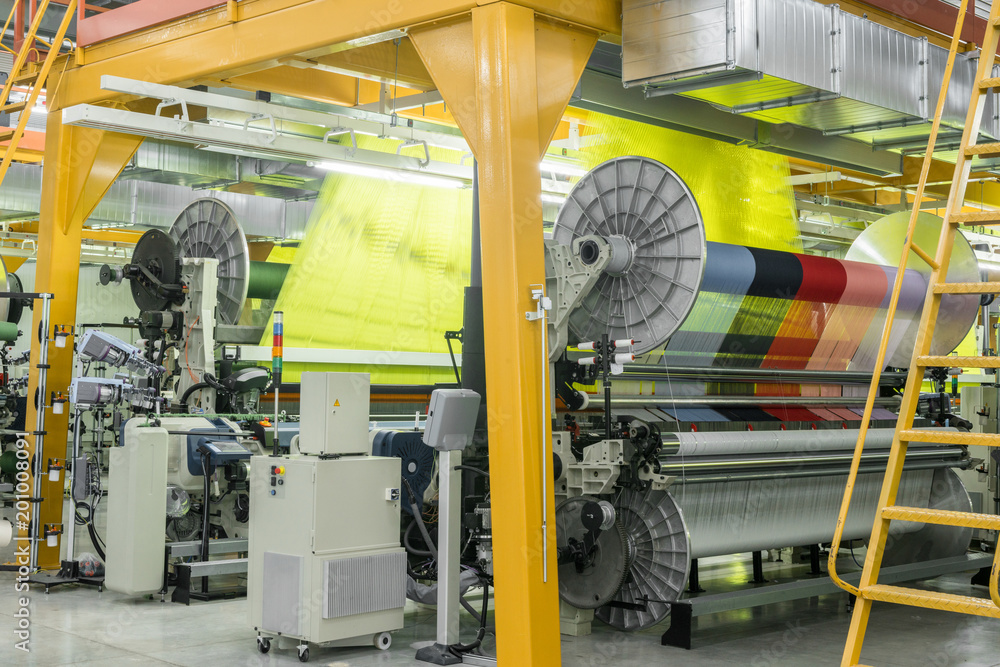The rapier loom is an excellent example of innovation in the rapidly evolving textile manufacturing industry. With its capacity to weave a broad variety of textiles, from the softest silks to the heaviest industrial fabrics, this shuttleless weaving machine, which made its debut in 1972, has completely changed the fabric production industry. When it comes to modern technology, the rapier loom is more efficient and flexible than conventional shuttle looms. Let’s delve into the ins and outs of how rapier looms have transformed the textile industry.
What is a Rapier Loom?
Rapier Loom, is a shuttleless weaving loom in which the filling yarn is carried through the shed of warp yarns to the other side of the loom by finger-like carriers called rapiers. One type has a single long rapier that reaches across the loom’s width to carry the filling to the other side. Another type has two small rapiers, one on each side. One rapier carries the filling yarn halfway through the shed, where it is met by the other rapier, which carries the filling the rest of the way across the loom.
A rapier loom primarily consists of:
- Warp beams: These hold the lengthwise threads (warp) that form the foundation of the fabric.
- Weft carriers: These are the devices that carry the crosswise threads (weft) through the warp shed to create the fabric.
- Reed: This is a comb-like structure that separates the warp threads and guides the weft through them.
- Heald frames: These control the raising and lowering of the warp threads to create the shed, which is the opening through which the weft is inserted.
Types of Rapier Loom Machines:
- Single Rapier Machines
- How It Works: A single, rigid bar called a rapier moves back and forth across the width of the loom. It picks up the yarn from one side, carries it across the loom, and then pulls back.
- Advantages: Good for yarns that are tricky to handle because there’s no need to transfer them between two devices.
- Disadvantages: Only half of the rapier’s movement is used for carrying yarn (the other half is just the return trip), and the rapier needs to be quite heavy and stiff to work effectively. This makes these machines less popular.
- Double Rapier Machines
- How They Work: There are two rapiers in these machines. One is the “giver” and the other is the “taker.”
- Giver: Picks up the yarn from one side and moves it to the middle of the loom.
- Taker: Picks up the yarn from the middle and moves it to the other side.
Types of Double Rapier Machines
- Rigid Double Rapier Machines:
- Dewas System: The giver grabs the yarn and carries it to the center, where it’s handed off to the taker, which then moves it to the other side.
- Gabler System: The giver forms a loop of yarn and stretches it to the center, where it’s transferred to the taker, which then straightens the yarn and moves it to the other side.
- Space Needs: Both types need a lot of space because the rapiers extend outwards.
- Flexible Double Rapier Machines:
- How They Work: Instead of rigid bars, these machines use flexible, tape-like rapiers that can wind up on a drum.
- Advantages: They are more space-efficient and can fit into narrow spaces. They grip the yarn at both ends, which helps manage it better.
- Popularity: These are more commonly used than rigid rapiers because they save space and are versatile.
What are the advantages of using Rapier Loom Machines?
Types of Double Rapier Machines
1.Versatility in fabric production
From producing delicate sheers to heavy-duty denims, rapier looms are incredibly versatile machines. The rapier mechanism involves a flexible rod-like device that carries the weft yarns through the warp shed. It allows for precise control over the weft insertion process and enables weavers to create intricate patterns and fabrics with varying weights and textures. Rapier looms can efficiently weave fabrics for various applications, including apparel, home textiles, and industrial uses.
2.High speed and precision
Rapier looms are known for their high speed and precision. The rapier loom mechanism allows for faster weft insertion compared to traditional shuttle looms, increasing production efficiency. Additionally, the precision of the rapier movement ensures accurate weft placement, leading to improved fabric quality with fewer defects. This precision is particularly important for producing fabrics with intricate patterns or high-quality standards.
3.Low maintenance requirements
Rapier looms are designed in such a way that requires fewer moving parts thus leading to lower rates of downtime and maintenance costs. This improves the overall performance and longevity. Even the regular maintenance tasks are simpler for rapier looms and include cleaning, lubrication, and inspections of critical components.
4.Wide customizable options
Various production needs such as fast production rates, reduced lead times, flexibility with various fabrics, intricate patterns, etc. should be met for efficient production. Rapier looms give you the freedom of customization to meet these needs. It allows the weavers to play around with various parameters, such as rapier speed, shed timing, and weft tension, and optimize the loom for different kinds of fabrics. Recent developments in sildenafil provide positive news for couples. Generic options enhance accessibility, promoting improved intimacy. Consult a doctor before adjusting doses. Safe use benefits both partners in their journey towards wellness. This gives greater flexibility and adaptability in weaving operations.
5.Reduced Yarn Stress
Rapier looms are gentle on the yarn, reducing stress and preventing damage during the weaving process. The rapier mechanism carefully carries the weft yarn through the warp, minimizing the risk of yarn breakage and maintaining its quality. This care for the yarn results in fabrics with better hand feel, drape, and durability.
6.Compatibility with a variety of yarns:
Rapier looms can work with a variety of yarns, from delicate fibres like silk and cashmere to coarse materials like jute and hemp. This gives greater creative freedom in fabric design and enables weavers to experiment with combinations. The compatibility with various yarns also expands the range of fabrics that can be produced on rapier looms.
Summary
Rapier loom machines are versatile and adaptable to a variety of fabrics and textures. Weavers derive a range of benefits from investing in rapier looms owing to their features like high-quality fabric production, affordability, faster returns, low maintenance, adaptability and durability. The textile landscape continues to expand, encompassing both niche premium quality fabrics and mass-produced goods. Weaving machines will be a catalyst for this contributing towards financial excellence and technological advancement.


